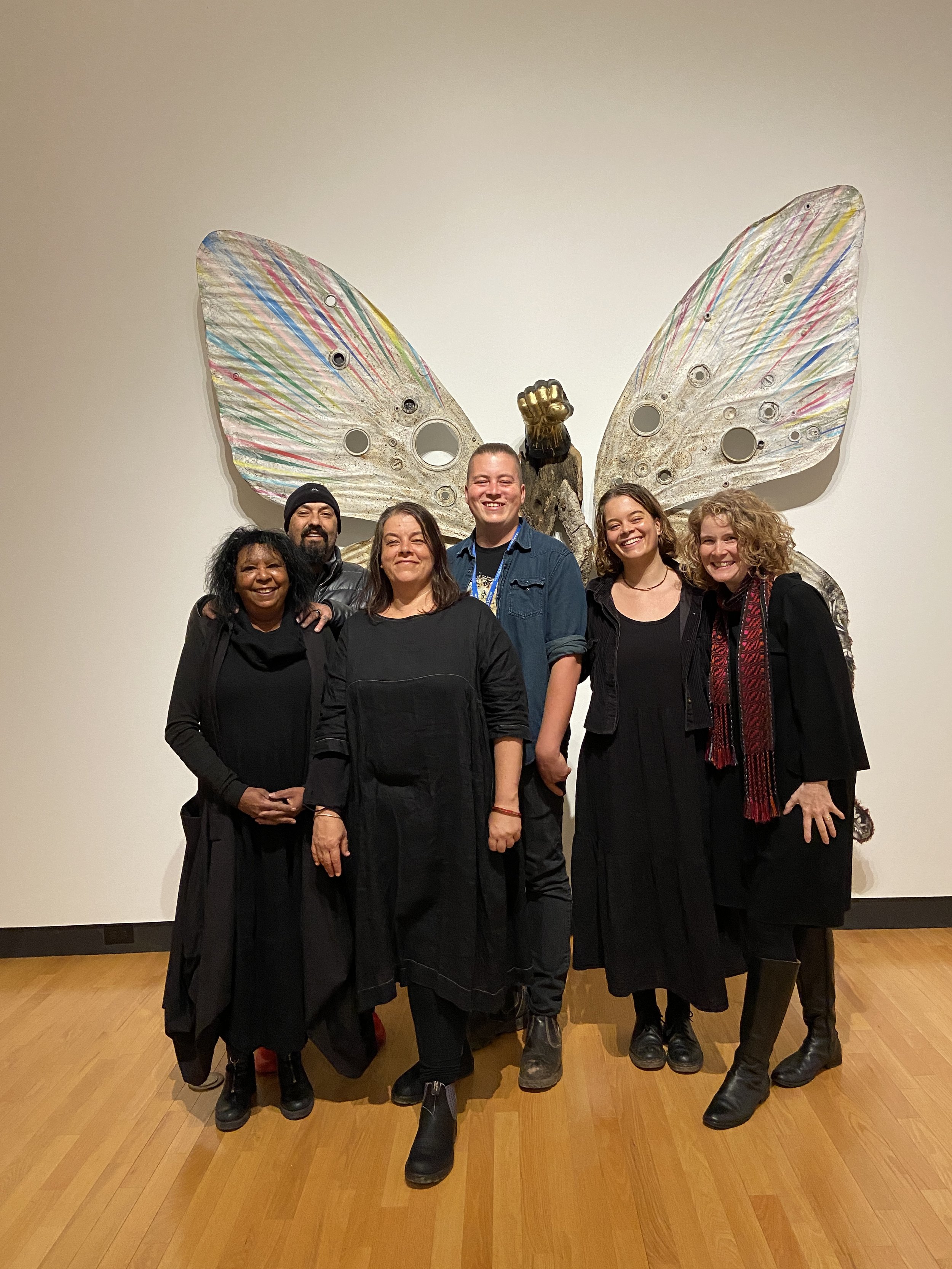By Rose Cohen ’22 & Siona Ahuja ’24
Arts & Entertainment Editors
Photo by Nilou Moochhala '94
Suitcase from Nilou Moochhala ‘94’s, “My Very Own Suitcase Series,” which represents stages of the artist’s life. This artwork, along with the eight other suitcases in Moochhala’s series, was displayed at the A.P.E. Gallery in Northampton, Massachusetts from March 9 to April 1.
The sound of waves crashing set to projected clips of the ocean. A collection of white paper boats made by gallery visitors. Collages of vintage family photographs. These were some of the pieces on display at the “Crossing Cultures” exhibition at the A.P.E. Arts Gallery in Northampton from March 9 to April 1.
The six visual artists whose work made up “Crossing Cultures” used five different regions to help define the themes of the exhibit. Throughout their pieces, lens-based artist Astrid Reischwitz, Peruvian Latinx Curator Claudia Ruiz Gustafson, Professor at Lesley University Vivian Poey, Iranian artist Shabnam Jannesari, Multidisciplinary Artist Nicolas Hyacinthe and Nymdesign Art Director Nilou Moochhala ’94 explored issues of identity, immigration and displacement through a variety of mediums, such as paintings, collages, photographs, videos and 3D installations.
Displayed in the center of the gallery, a set of 10 multicolored suitcases, installed by Moochhala, seemed to tie these different parts of the exhibit together. Each piece of baggage included in Moochhala’s portion of the exhibition, titled “My Very Own Suitcase Series,” tells a different story about the various stages of the artist’s life. For instance, “Choddna (Leave)” highlights her departure from her hometown of Mumbai to study art at Mount Holyoke. Using colorful string and passport photos of her parents and siblings, Moochhala maps out the migratory journeys of members of her family.
“So it’s this sort of duality, right, that rises out of not belonging in any place,” Moochhala said, reflecting on the meaning of “Choddna (Leave).”
“We were all foreigners to our own country,” she continued.
Graduating from Mount Holyoke as a studio art major with a concentration in economics, Moochhala went on to complete a special master’s program in graphic design at the Yale University School of Art. She credited the late Mount Holyoke Art History Professor Robert Herbert in “changing [her] pathway and allowing [her] to be creative.”
Walking around her exhibit, a package full of labels for her artwork in hand, Moochhala pointed to certain family memorabilia featured in her work. Fragments of handwritten letters, an altar dedicated to colored pencils, glass vials and a sewing kit adorned the interiors of these mismatched pieces of luggage. “One actual common thread between all of us is family,” she said, referring to the artists featured in “Crossing Cultures.”
Moochhala chose to use suitcases to convey the idea of the “ugly” emotional baggage we carry around. “Well, the idea of crossing cultures and obviously leaving home, you go from one place to the other, and at the least that’s the one thing you bring with you,” she said, further explaining her decision to utilize suitcases. “It seemed to perfectly fit with the show.”
To Moochhala, suitcases alluded to the inevitable challenges faced by herself and other immigrants. “You are also a transcriber of your culture in another place. … How do you carry that [culture] forward into the next generation?” Moochhala said.
Unlike the artwork of Hyacinthe and Reischwitz, Moochhala described her portion of the exhibition as more textural.
“Each [suitcase] has to evoke a different sort of feeling and sensation, whether it’s floaty, whether it’s prickly, whether it’s inviting, whether it’s blocked,” Moochhala said.
Standing beside her portion of the exhibition, which stood at the forefront of the gallery, Moochhala defined what art means to her. As Moochhala tried to put the mode of creativity into words, she explained that she thinks of artists as cultural storytellers.
“Whether you’re a writer, an artist, musician, whatever creative discipline you’re in, you’re almost reflecting on what is going on currently, at this point in time, to everybody around you,” Moochhala said. “That’s a separate sort of way of seeing, right, it’s a separate perspective. So if you can get people to understand that and see it, then you’ve done your job.”


